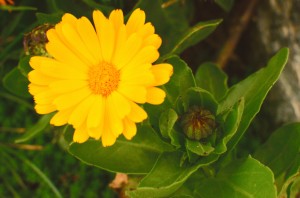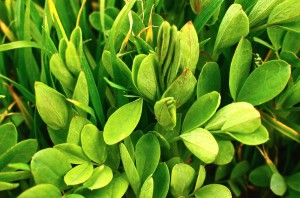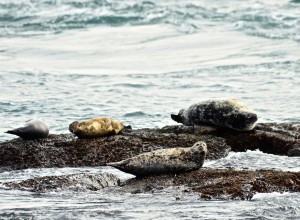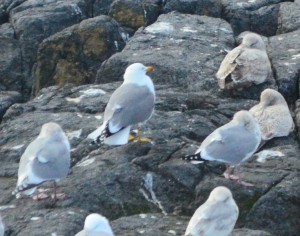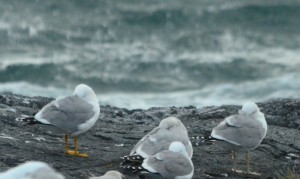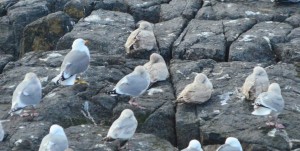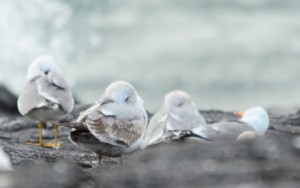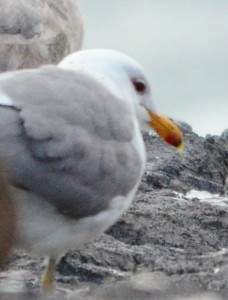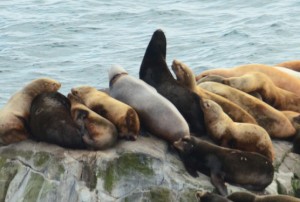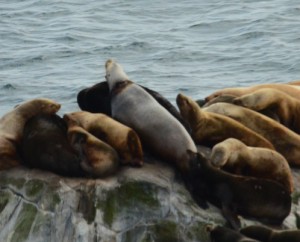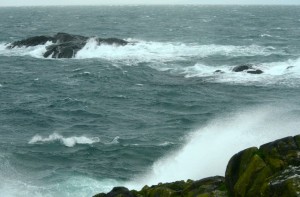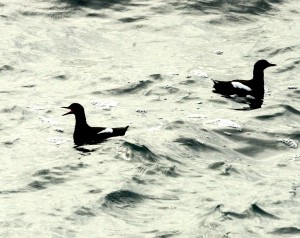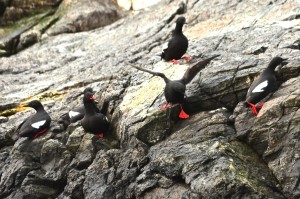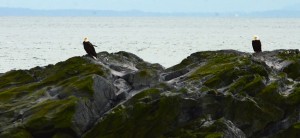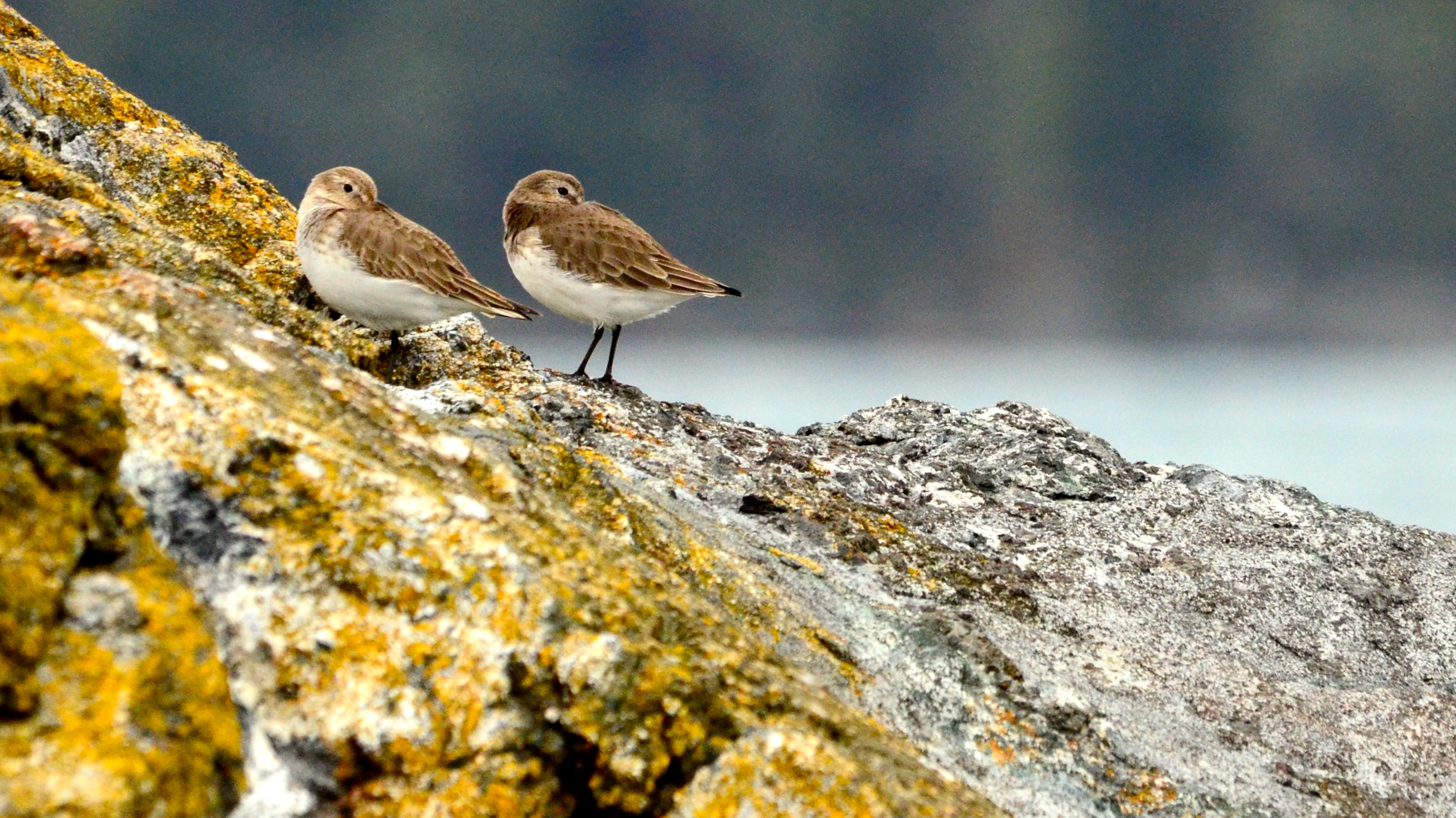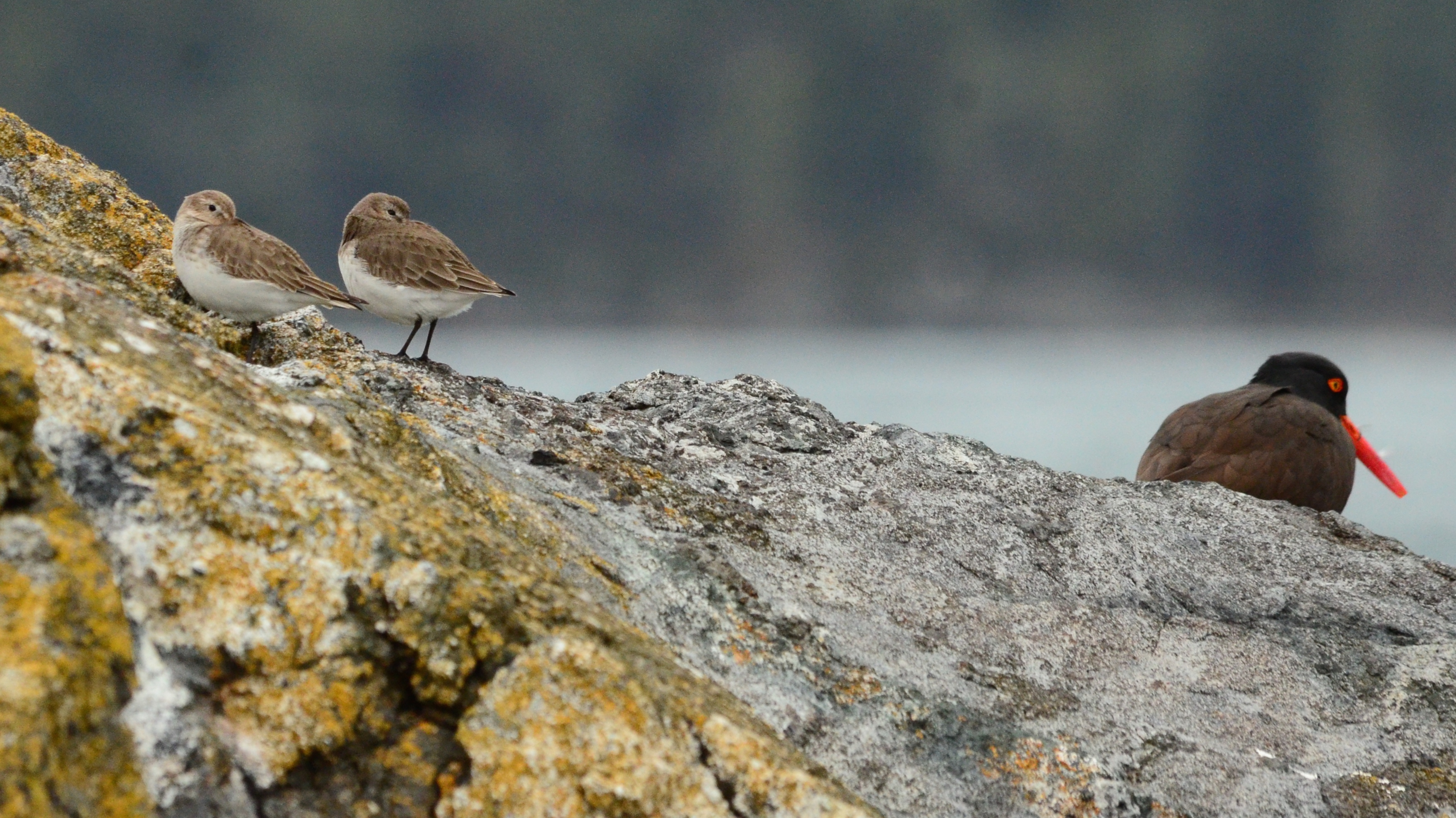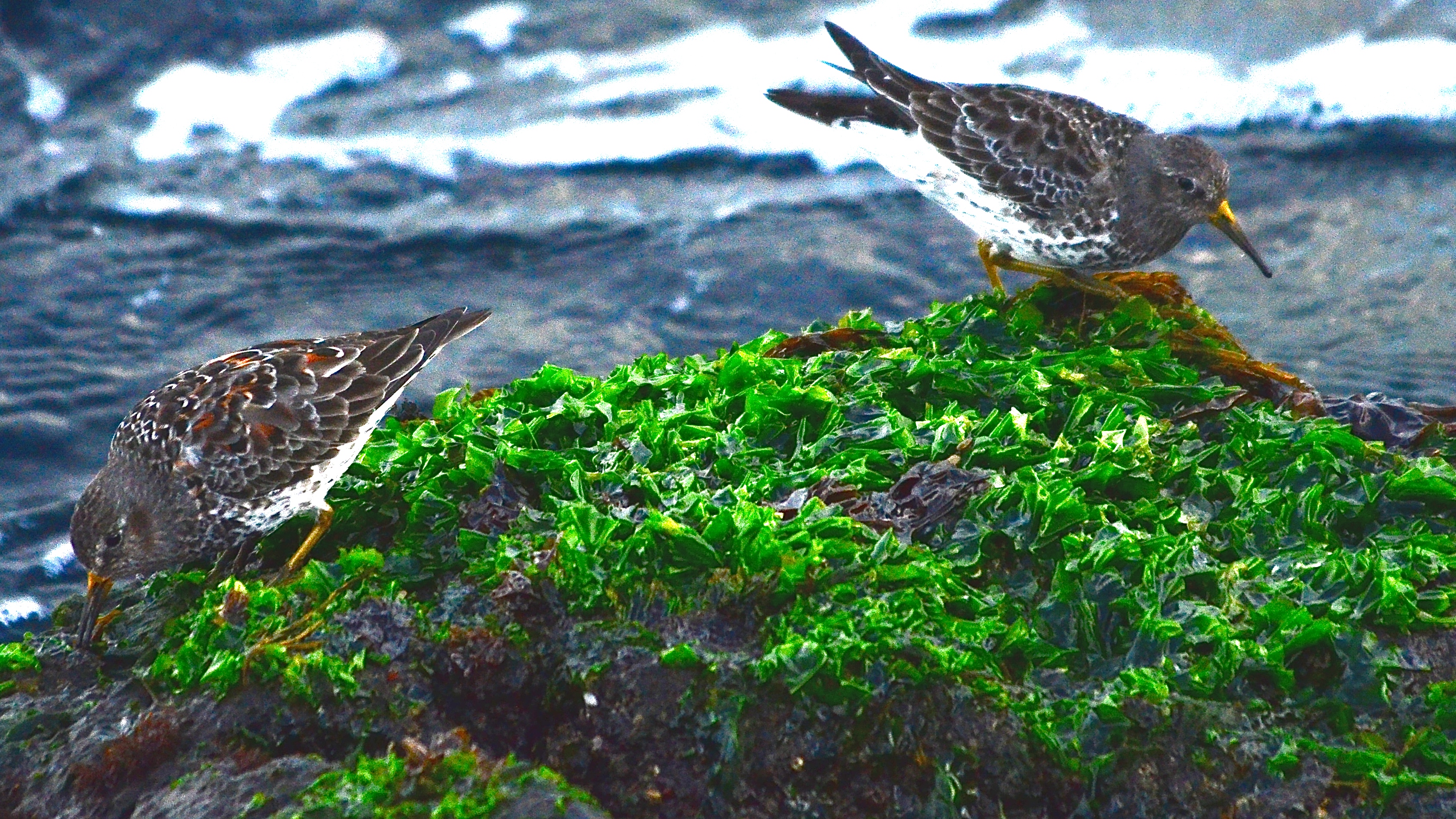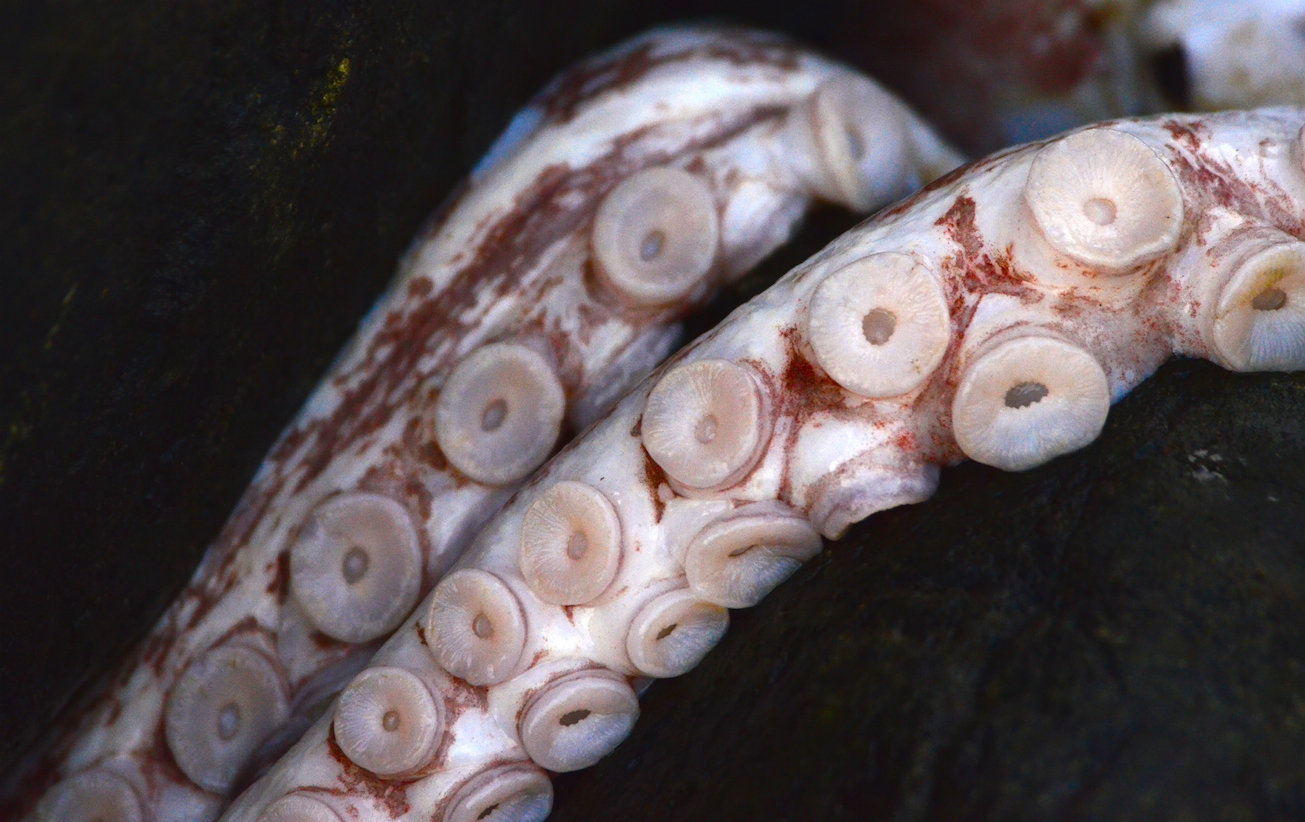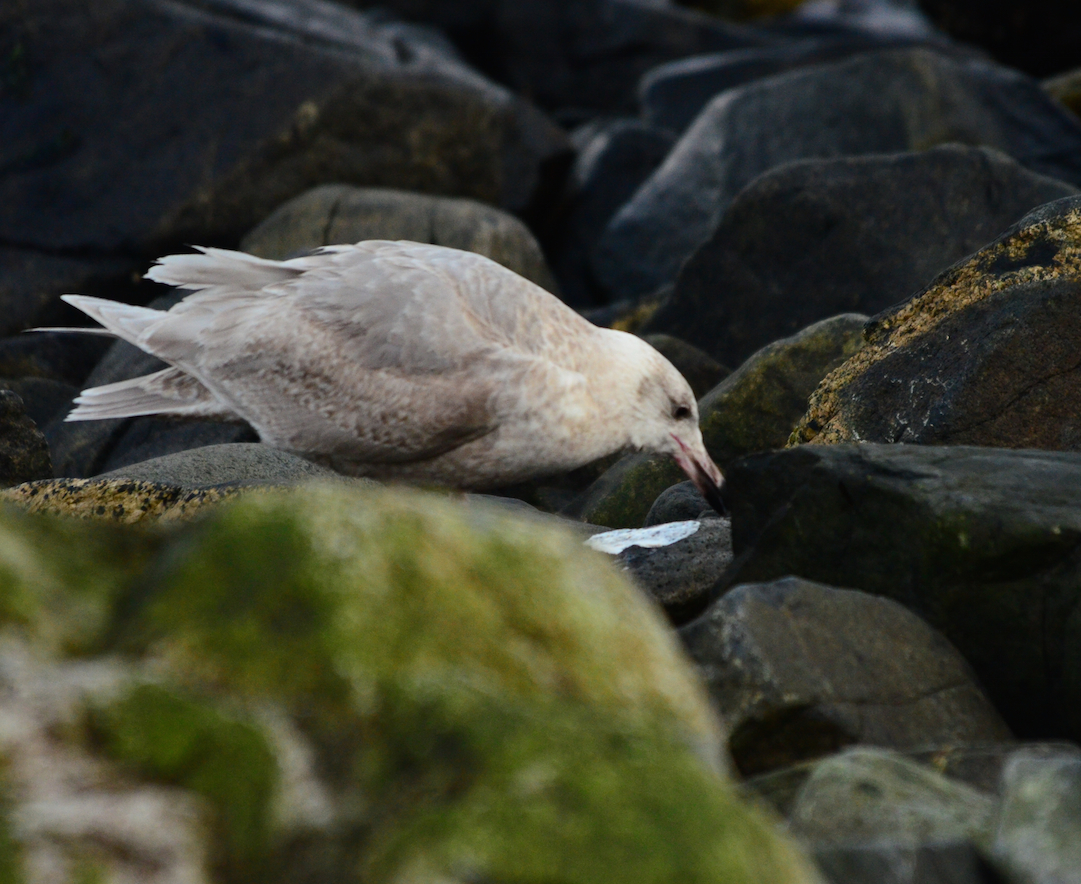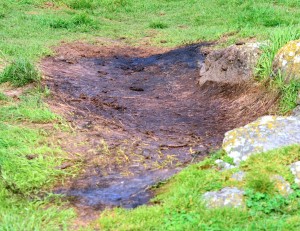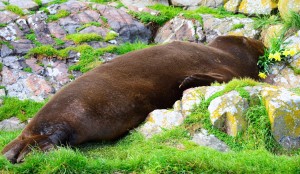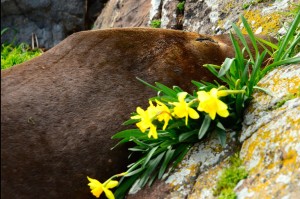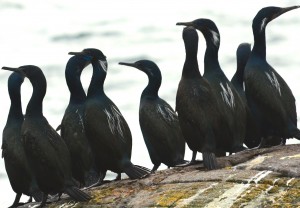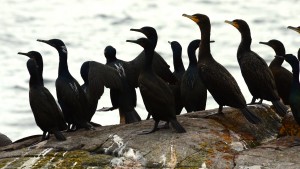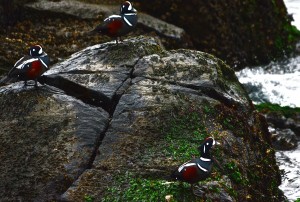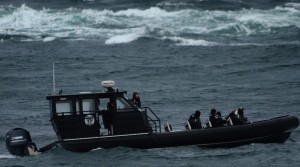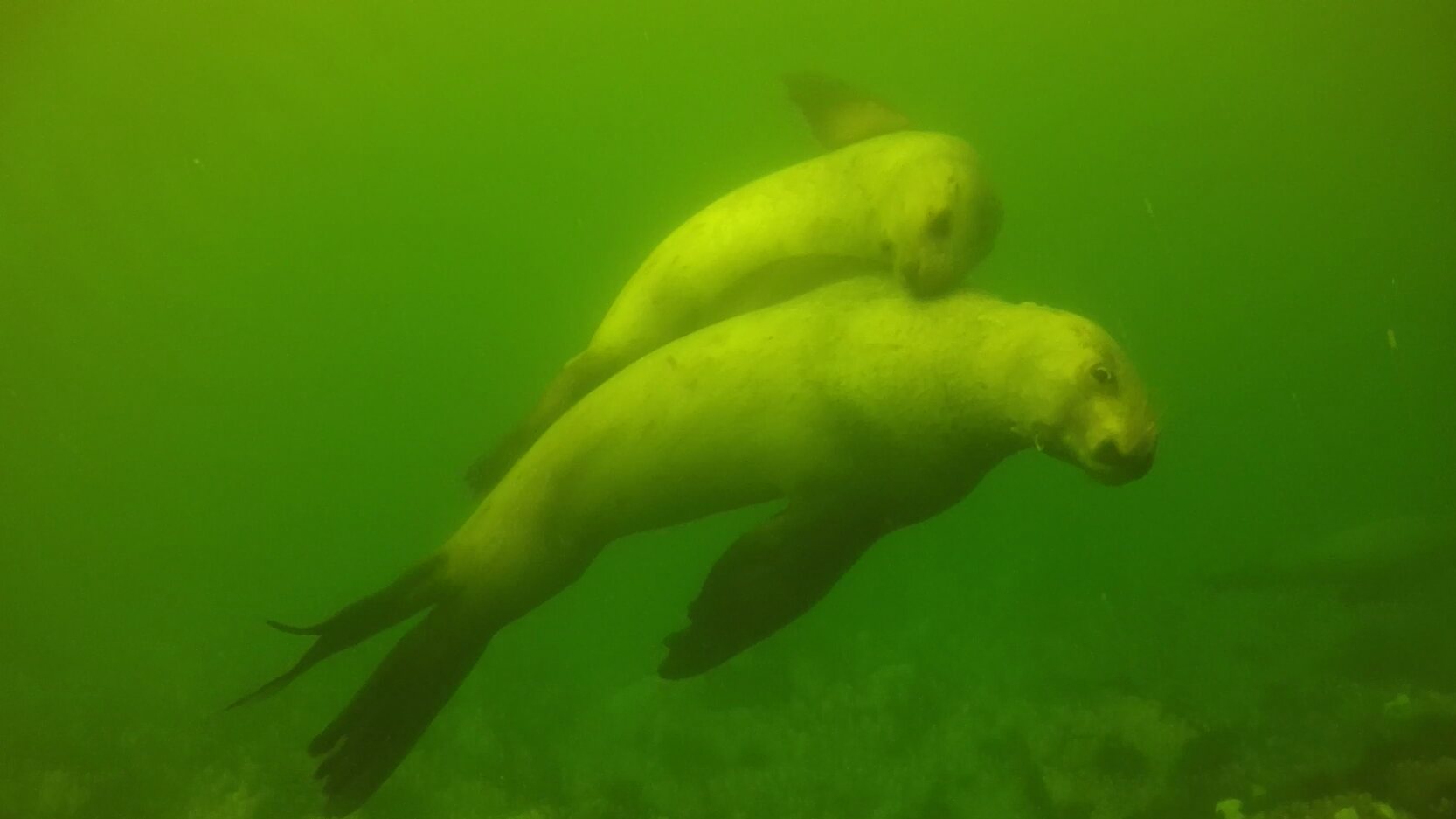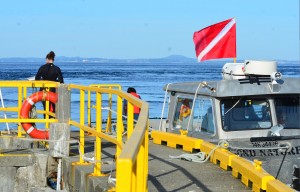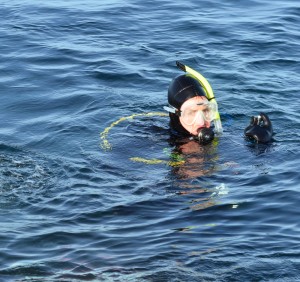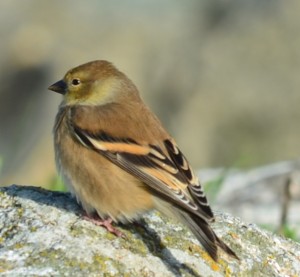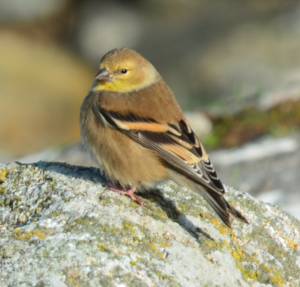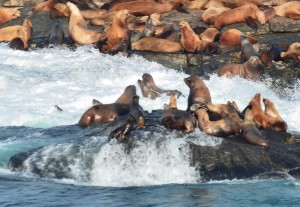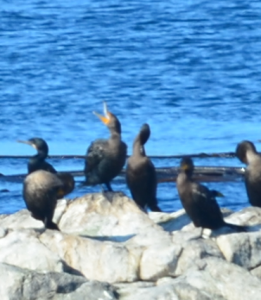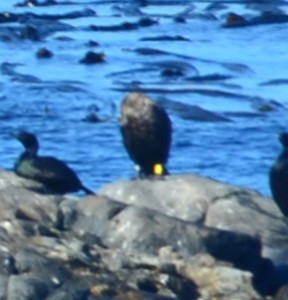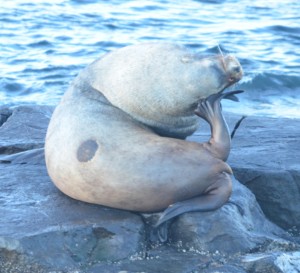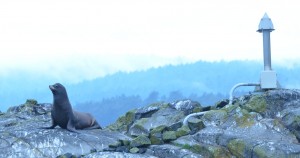Wednesday morning, while tide, wave height and current speed were just right; we slipped a crew change through a narrow window between two gales. As we waved goodbye, and I turned to get moved in, the barometer started to drop again.
After four and half months away, it was good to be back on Great Race with its familiar views of the Strait of Juan de Fuca. As an averred naturalist, I couldn’t help notice that North Rock was bristling like a military brush cut, with 350 – 400 cormorants. All three species Pelagic, Double-crested and Brandt’s, were ‘drying out’ on this strategic roost after foraging in the sea. An adult Bald Eagle swooped in and the cormorants en masse, hit the water. The tidal ebb started to clear them out to sea, pulled by moon and pushed hard by rainwater rising in the Salish Sea. The cormorants dispersed and the counting moment was over; some flew, some dove and others disappeared into the gloom, as more rain squalls swept in.
Concentrating on moving in and checking all systems in order, counts were put on hold for Thursday’s census. Chunk, the big, pup-killing, male Elephant Seal was lying where he had apparently been, on and off, for a week. He was a little too close to the path for comfort, which meant that coming and going to the energy building involved tip-toeing by, while keeping a look-out for his eyes to open and being ready to run, if necessary. Of course it is never necessary but absence makes the fear forget.
Riley left things fairly ship shape and I knew that everything was going to be fine when the old Lister generator roared to life. In the evening, the wind gradually rose to 36 knots, ESE, a speed and direction that makes the back door of the house whistle a weird, three-toned tune, but it didn’t keep me from a deep sleep.
Seawater sampling came early and the morning weather was fairly wet and windy. The sun broke out with rainbows in the afternoon and the wind dropped to less than 10 knots. As the sun sets now, the forecast is calling for light winds, a chance of showers Friday morning with rain again by afternoon.
Once established that it was a beautiful afternoon, three small whale-watching boats came out to watch the sea lions on South Rocks. It always makes me a little nervous to see them with their human cargo in close to the south reefs and the sea lions. Their insurance companies probably wouldn’t be too keen on that sight either.
Today was census day and there were interesting differences in the timings of comings and goings of different species. Today, the Pigeon Guillemots were here at first light and numbers kept increasing until about noon. They were all gone by late afternoon. The Black Oystercatchers were together in a squawky flock early in the morning and then dispersed. The sea lions hauled out mostly in the morning but additional individuals hauled throughout the day. The cormorants started roosting late morning and were mostly back in the water by late afternoon. The Harbour Seals hauled out in the late afternoon. There were few gulls in the morning, but by mid-day some were pairing up and looking like they might already be standing near their nest sites. By late afternoon there were over 200 gulls roosting on the island but they were gone by the time I came back from shutting down the generator at 21:00. The Killdeer, as usual arrived after dark.
The diverse temporal use of the Ecological Reserve by different species would be missed in a standard count where the observer passed through during a set amount of time. By having an Eco-Gaurdian here throughout the day, a much more thorough accounting of the different species use of the Protected Area is possible.
Here are the results of the animal census:
| 2016 |
03-Mar |
| River Otter |
1 |
| Northern Elephant Seal |
1 |
| Harbour Seal |
72 |
| Northern Sea Lion (Steller’s) |
36 |
| California Sea Lion |
41 |
| Canada Goose |
6 |
| Harlequin Duck |
16 |
| Surf Scoter |
11 |
| Common Merganser |
1 |
| Brandt’s Cormorant |
50 |
| Double-crested Cormorant |
150 |
| Pelagic Cormorant |
100 |
| Cormorant |
50 |
| Bald Eagle (juvenile) |
9 |
| Bald Eagle (adult) |
2 |
| Killdeer |
2 |
| Black Oystercatcher |
24 |
| Black Turnstone |
23 |
| Surfbird |
1 |
| Mew Gull |
2 |
| Glaucous-winged Gull (+hybrids) |
214 |
| Pigeon Guillemot |
147 |
| Northwestern Crow |
2 |
| Fox Sparrow |
1 |
| Song Sparrow |
1 |
Friday’s weather was windy and wet. There was a lull early, as it switched for a short time to southwest but then turned back with a vengeance to strong northeast and big seas. The forecast is for a switching back and forth from southeast veering to southwest and back. It is blowing north 24 knots as I post this Friday evening, but is supposed to come down to light variable in the morning, rising againSaturday afternoon.
One whale watching vessel used the Ecological Reserve today and like yesterday’s boats, it too ventured into the danger zone of breaking reefs on the south side. The ebb was so large at the time that there were standing waves and a huge overfall along the string of rocks, islets and shallows. After a few tippy moments, they got out of there and I was glad they were all safe and sound.
I fought entropy today doing a few minor cleanups, making kindling and moving propane tanks around (downhill and empty). The usual chores also kept me busy. I tried to figure out what is going on with the camera, which has not yet fully cooperating. Now that I am through the technical barriers and able to post the blog I will be doing so daily and hope to post photos soon.

